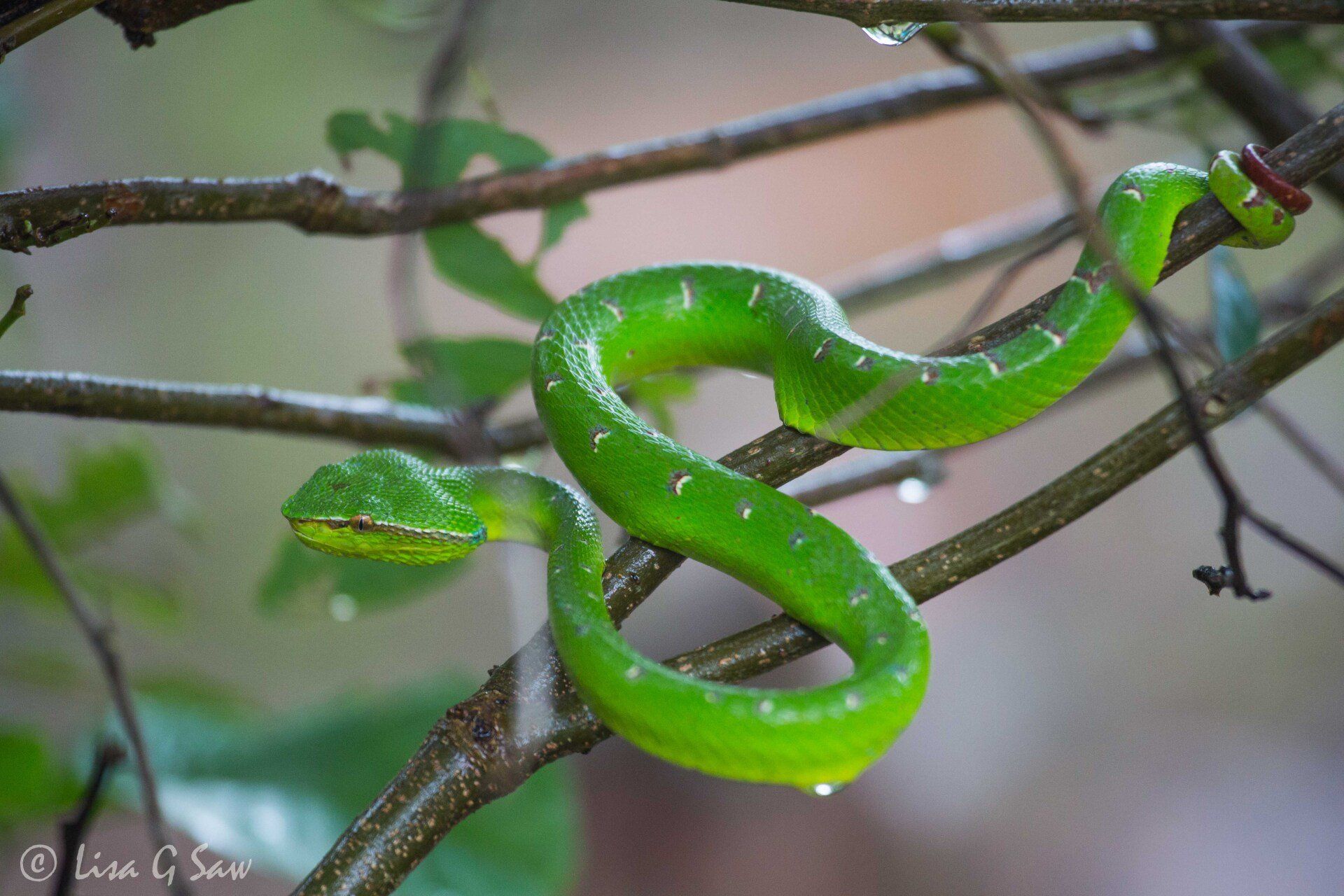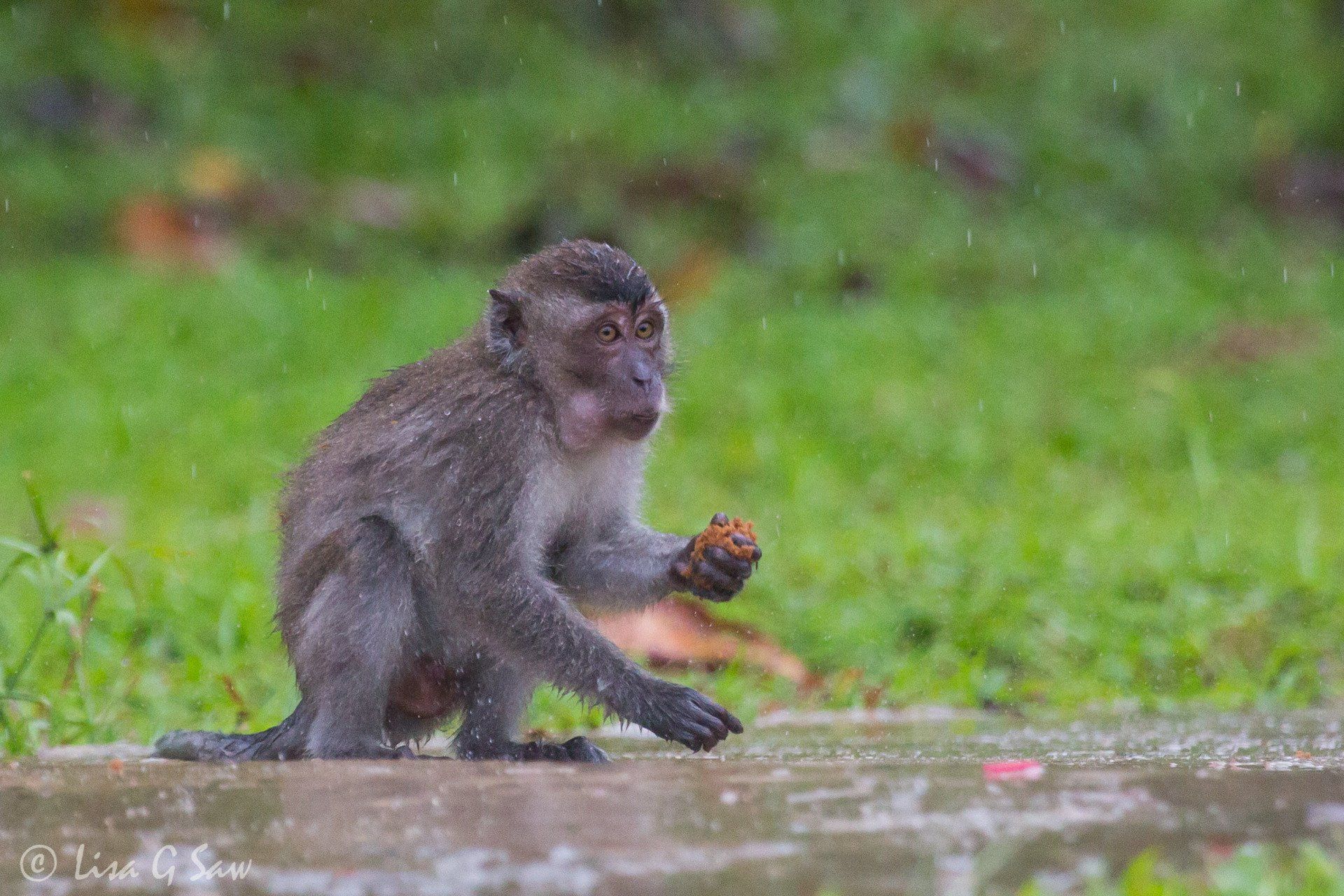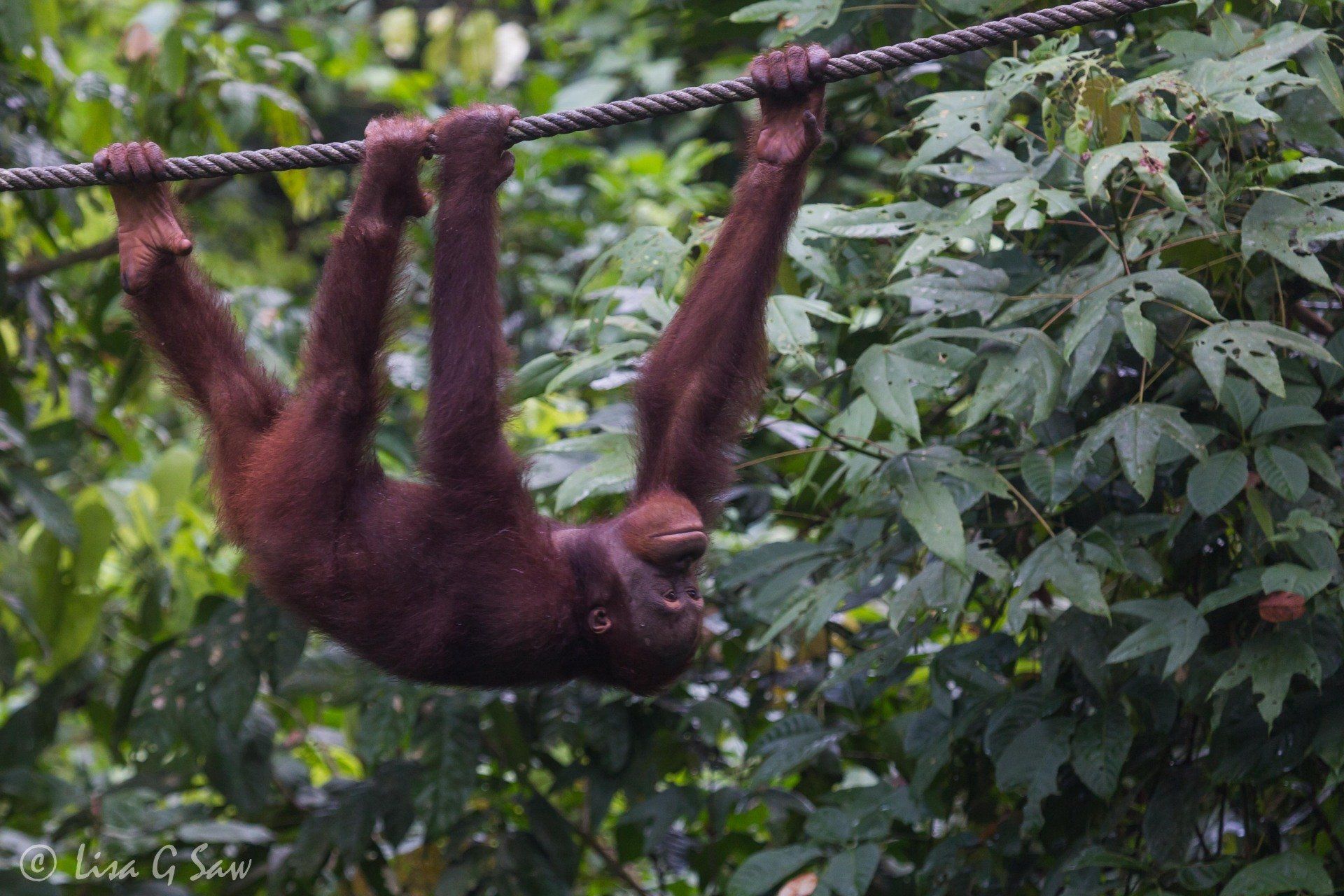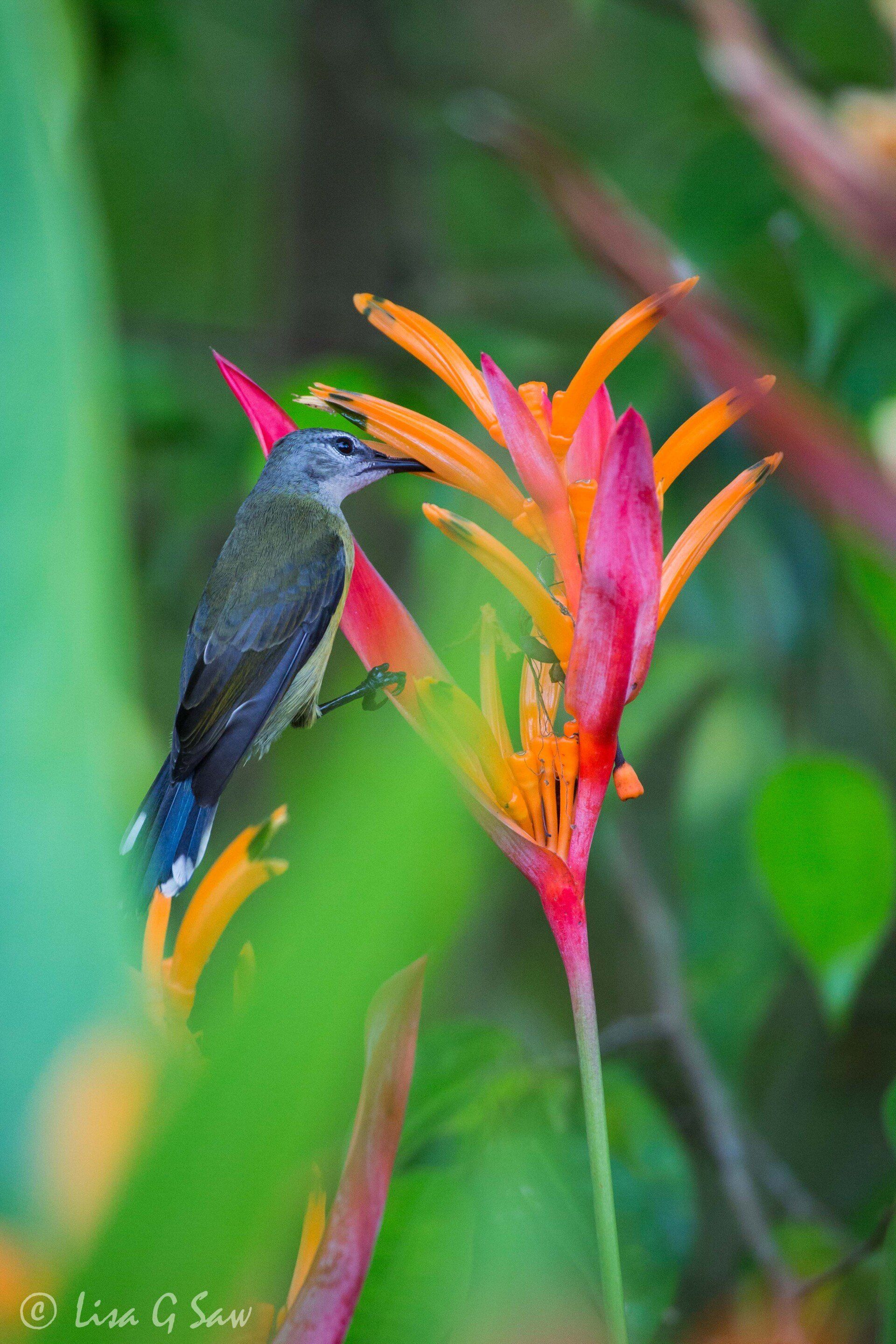ORANGUTANS IN BORNEO
2017
Sandstone cliffs of Bako National Park, Sarawak.
Juvenile Bornean Keeled Pit Viper (Tropidolaemus subannulatus). In adult males the upperside markings would be long thin lines. This venomous snake was seen near the visitor centre in a tree at chest height.
Long-Tailed Macaque (Macaca fascicularis) also known as a Crab-Eating Macaque.
This cheeky monkey stole a chocolate sponge from a man's plate in the café.
The Shake.
Adult male Proboscis Monkey (Nasalis larvatus) dispelling rainwater from its body. Only the adult males have a large proboscis (nose).
A Green Crested Lizard (Bronchocela cristatella) welcomed us upon arrival at our accommodation in Gunung Mulu National Park. It may be a lizard not a frog, but this photo still makes me think of Kermit!
Frog seen on a night walk in Gunung Mulu National Park.
Red Millipede.
It wasn't wise to use the boardwalk handrail in Mulu National Park because there were all sorts of creatures crawling along it.
Secluded island cove near Kota Kinabalu.
At first, I thought this fish was a leaf floating in the water.
Asian Water Monitor (Varanus salvator)
At first, this looks very normal, human like, just having a scratch, until you realise the Proboscis Monkey is using its foot.
Labuk Bay Proboscis Monkey Sanctuary
I think one of the reasons why I love primates so much is because of how similar they are to humans in terms of their behaviour.
Malayan Sun Bear (Helarctos malayanus) climbing a tree at the Bornean Sun Bear Conservation Centre in Sepilok.
When the effort of everything gets too much, relax.
Long-Tailed Macaques grooming. It's not only to keep them healthy but also reinforces social structures and bonds. It was enjoyable watching them interact with one another, even though we were hoping to see the orangutans at feeding time on our first visit to the Sepilok Orangutan Rehabilitation Centre.
Bornean Orangutan (Pongo pygmaeus).
We had to wait until the second feeding in the afternoon before we saw our first orangutans.
Orangutans share 97% of their DNA with humans.
Orangutans are the most arboreal (tree-dwelling) of the great apes.
The Look
Watching.
This orangutan was less than 5m away from the boardwalk and there were just 4 of us walking by at the time. Who was watching whom?
All three species of orangutan are critically endangered. Human activities have caused severe declines in populations and ranges (poaching, habitat destruction, deforestation and illegal pet trade).
Heirarchy.
It wasn't uncommon to see juvenile orangutans in the nursery (at the rehabilitation centre) taking food out of another's mouth.
Stork-Billed Kingfisher (Pelargopsis capensis).
This species is much larger than the Common Kingfisher (Alcedo atthis) which is the only species found in the UK.
Red Leaf Monkey (Presbytis rubicunda) in Danum Valley.
This species of primate is only found in Southeast Asia.
We found a troop of them close to our accommodation on our last morning. I missed breakfast in order to enjoy this close encounter. So worth it!
Male Whiskered Treeswift (Hemiprocne comata).
I love how it looks like he's wearing a mask.
Final Seconds.
I've not managed to ID this bird yet, but the shape of its beak suggests it might be a Sunbird. The blue green colouration of its wings, throat and tail are beautiful.
You can see why the sunbirds have a long beak!
Female Lesser Green Leafbird (Hemiprocne comata).
She blends in so well to her environment. The male is easier to spot as he has a black and blue throat.
Possibly a Common Sun Skink (Eutropis multifasciata)
Gunung Mulu National Park
Horned Flying Lizard (Draco cornutus)
Sepilok
Borneo Tree Skink (Dasia vittata)
Danum Valley
Torrential Rain in Danum Valley
One of the things that impressed me the most about Danum Valley Conservation Area, aside for its unspoilt beauty, is just how tall the trees are in the rainforest.
Malaysian Giant Tree-Nymph (Idea lynceus)
(or possibly another species of Tree-Nymph)
This beauty gently floated above us as we glided down one of the side channels from the Kinabatangan River. The wingspan is about the size of your hand!
Tropical Swallowtail Moth (Lyssa zampa).
This large moth was on the door leading to our accommodation block in Sepilok.
Seeing Double.
Borneo Clipper (Parthenos sylvia borneensis).
Double Bill.
A pair of Rhinoceros Hornbills (Buceros rhinoceros) with their characteristic orange and red casque. The eyes of the male are red with black rims (right), and white with red rims in the female (left).
A pair of Oriental Pied Hornbills (Anthracoceros albirostris).
The male (right) has a slightly larger casque than the female (left) and their colouration is different.
Kinabatangan River
Long-Tailed Macaques in the trees at the river's edge after the rain.
Borneo Pygmy Elephant (Elephas maximus borneensis) is a sub species of the Asian Elephant. Against the odds we were lucky enough to see a trio of elephants close to the water on the Kinabatangan River. You can read more about the experience in my blog.
Tranquil Turquoise Waters on Turtle Island
Nighttime Delivery.
At the end of my tour I visited Turtle Island to see turtles coming ashore to lay eggs at night.
Green Sea Turtle (Chelonia mydas)
Bid For Freedom.
This little hatchling had missed being released at night.



















































